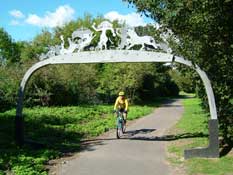On the 14th July the Friends of Centurion Way will hold a summer celebration on Centurion Way as part of the Festival of Chichester.

The FOCW event will run from 2 PM and this webpage is dedicated to the quiz and short circular walk activities associated with this event.
Follow this link for a pdf copy of the Quiz
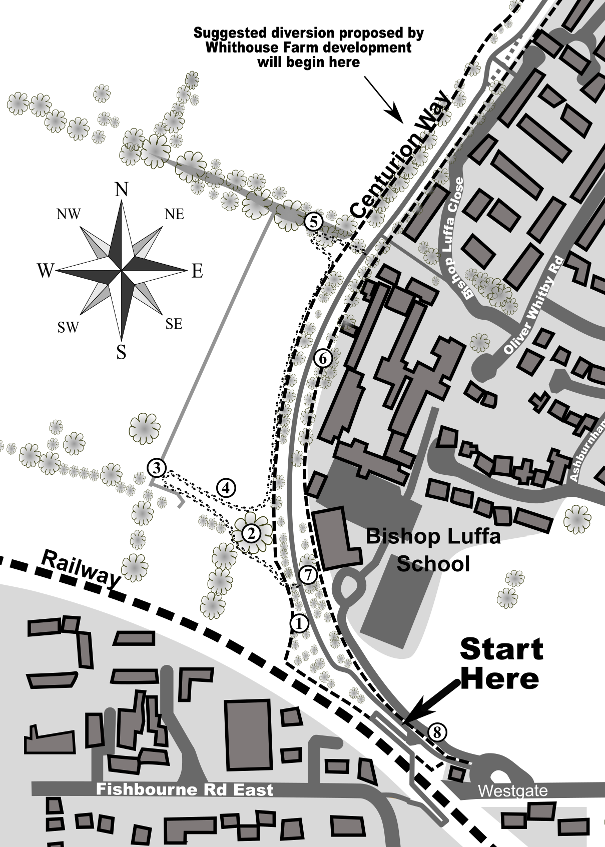
Item 1
Telegraph Pole
This item reflects the history of this path long before it became the Centurion Way footpath/cycle way we know and love today. In 1881 this route was opened as a railway line between Chichester to Midhurst.
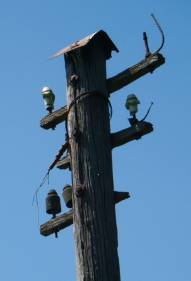
This is one of the few remaining telegraph poles along centurion way. Most have rotted and fallen over already.
Item 2
Mature Oak

Friends of Centurion Way believe this tree has probably been growing here since even before the Chichester to Midhurst railway opened in 1881.
Can you help us estimate how old this oak tree really is?
Paula Chatfield has found some excellent instructions on calculating the age of an oak without the need to cutting it down to count the growth rings!
Oak tree ageing method 1(Woodland Trust)
Tree measuring method 2 (Science & Plants for Schools)
Item 3
Chalk Stream
A chalk stream is a watercourse which flows across or is influenced by chalk bedrock. They are usually fed by underground or seasonal springs and often have ‘winterbourne’ stretches in their headwaters which run dry in late summer. A chalk stream environment is rich in invertebrate life. They also provide an ideal habitat for Water Vole.
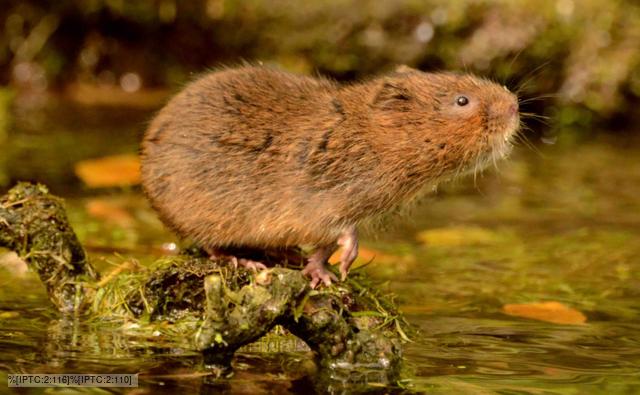
Item 4
Reptiles
This Reptile Barrier Fence has been erected in preparation for Phase 1 development at Whitehouse Farm (Phase 1 includes land to the west of here intended for playing fields, a sports pavilion and temporary access to sewerage infrastructure). The fencing is intended to help ecologists capture and relocate reptiles such as slow worms (which are very common here) so they are not harmed by construction.
Southern water are also building a 10km sewer pipeline that will run from the White House Farm development here west of Chichester, across the north of the city and through to Tangmere. They are also publishing a comprehensive leaflet about this project explaining things such as, how they can use directional drilling to pass the pipe beneath roads and paths.

Slow-worms are lizards, though they are often mistaken for snakes. Unlike snakes they have eyelids, a flat forked tongue and can drop their tail to escape from a predator.
Slow-worms have a shiny appearance. Males are a greyish brown and females are brown with dark sides. Some females possess a thin line down the back. Juvenile slow-worms are very thin and are initially around 4cm long. Juveniles have black bellies and gold or silver dorsal sides, sometimes with a stripe running along the length of the body.
Item 5
Roman Road
Paula Chatfield produced an excellent information sheet on the history of Hook Dyke for the Parklands Easter Trail 2014 which is reproduced here in pdf format.
Paula has also produced a second information pdf sheet explaining this history in greater depth and which describes what local historians and archaeologists have said about Hook Dyke over the years.
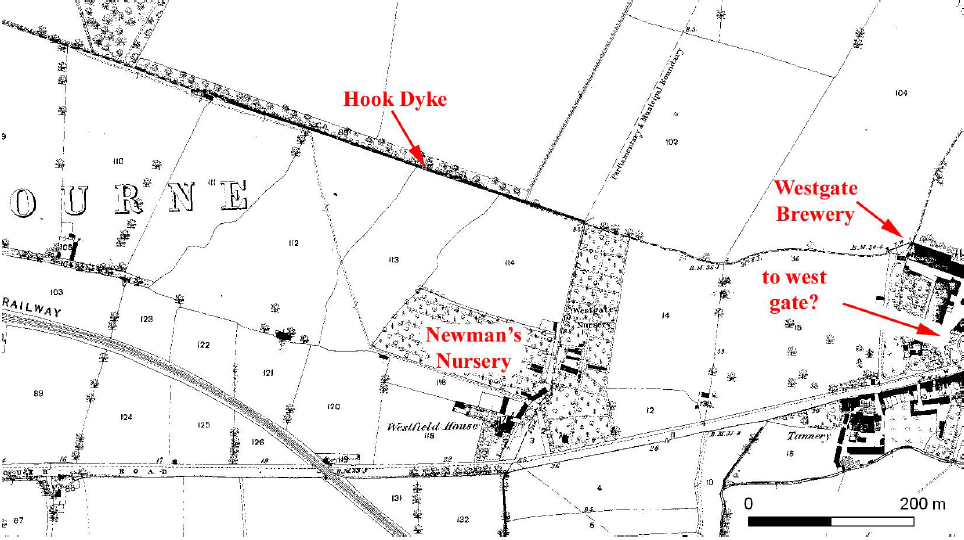
Williams-Freeman considered Hook Dyke embankment may have been a Roman road with a causeway constructed to cross the soft, wet clay ground to the west of Chichester.
We believe this was J.P. Williams-Freeman, a Weyhill country doctor trained as a military surveyor who became a member of the Hampshire Field Club; he was a fine amateur field archaeologist and in the sixth volume of the society’s proceedings.
The idea that Hook Dyke may have once been a Roman road is credible as it could explain where the Roman Chichester Winchester road was historically located.
It has been noted that the line of the Roman road west from Chichester to (ultimately) Winchester is not known between the site of the west gate and Cutmill Creek, north of Chidham, and that the Hook Dyke line is a strong candidate because of the way that, unlike the modern A259, it avoids the Fishbourne Palace site and the surrounding boggy ground.
Item 6
Bats

According to the Bat Conservation Trust ; Many people don’t realise that bats use woodland edges, hedgerows, rivers and other linear features like tree-lined footpaths as corridors to commute from one area of countryside to another. These features act as navigational landmarks and can also provide some protection from predators. As bats fly through the night, their echolocation calls bounce off these landscape features, helping the bats find their way to and from their roosts and foraging habitats.
If bats’ commuting routes are severed (for example, by roads) bats can be cut off from their foraging habitats, making it harder for them to hunt and survive.
On an evening walk in spring, summer and autumn, you are most likely to see the Common Pipistrelle bat which is tiny (on average weighing only 4 to 8 grams).
However there are very many Bat species in the area and Sussex bat group has a very informative website you can visit for more details.
In fact, just beyond the Northern limit of Centurion Way in a tunnel along the route of the old Chichester to Midhurst railway lives the only known Greater Mouse-Eared Bat in the country. The greater mouse-eared bat is so large that observers who first discovered it in Britain likened one to a young rabbit hanging from a wall. In flight, its wings can stretch to nearly half a metre.
Watch out for the FoCW website calender because we are planing dedicated Bat evenings with both wildlife experts and bat detection equipment available.
Item 7
Wild Plum
Approximately 200 meters (218 yards) from the southern entrance to Centurion Way, is a wild plum tree. It’s fruit can already be seen growing in July but these fruit will not ripen till late in August. It is unusually large for a plum tree and it is unfortunately difficult to reach the high fruit. Non the less, when the fruit are ripe they are a welcome juicy snack for anyone using the path.
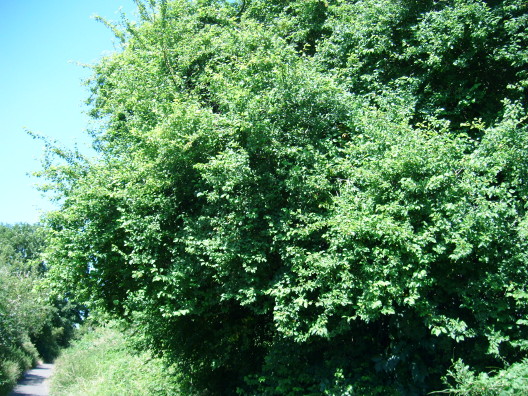
Plums are part of the Prunus genus and can cross pollinate and form hybrids with blackthorn. This plum is growing opposite blackthorn and you can find a few hybrid plants growing nearby.
The woodland trust has more information about Plums here
Item 8
Giant Sculpture
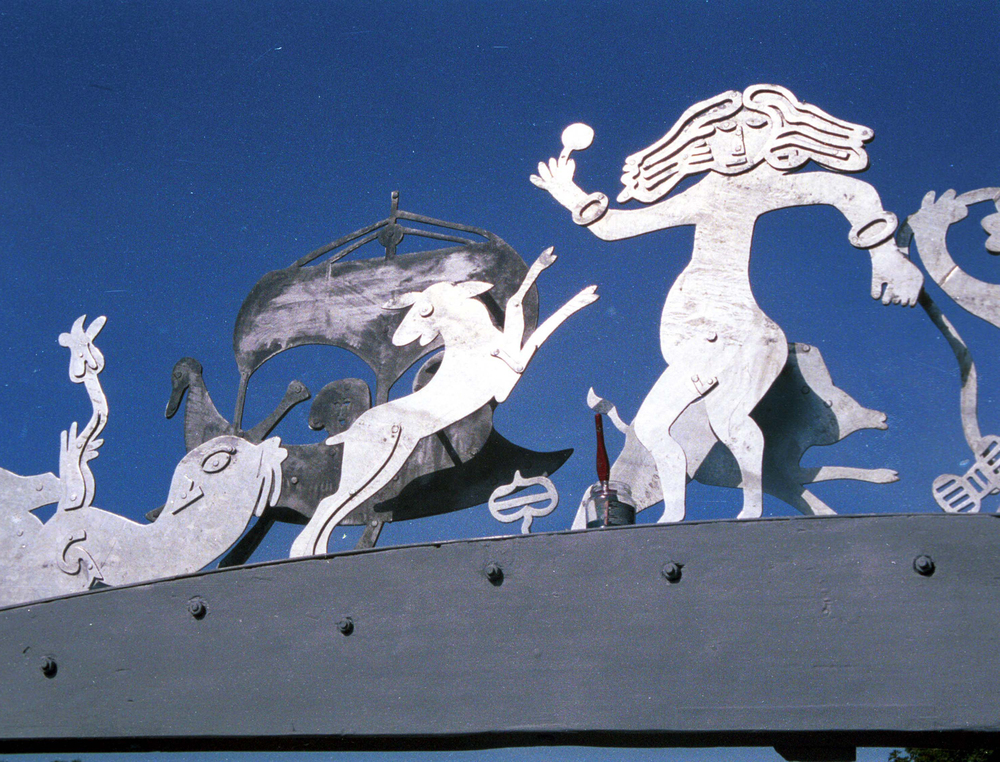
This was an example of Sustrans‘ ongoing commitment to having artworks along their cycle paths. In association with children from Bishops Luffa Comprehensive, near the Chichester entrance Richard Farrington made Roman Archway a structure topped with dancing images taken from Romano British mosaics. Unfortunately it fell over due to disrepair and only a remnant post is visible now.
Richard explains more about it on his own website here.
The picture below shows how the sculpture looked when it was positioned at the southern entrance of the path
